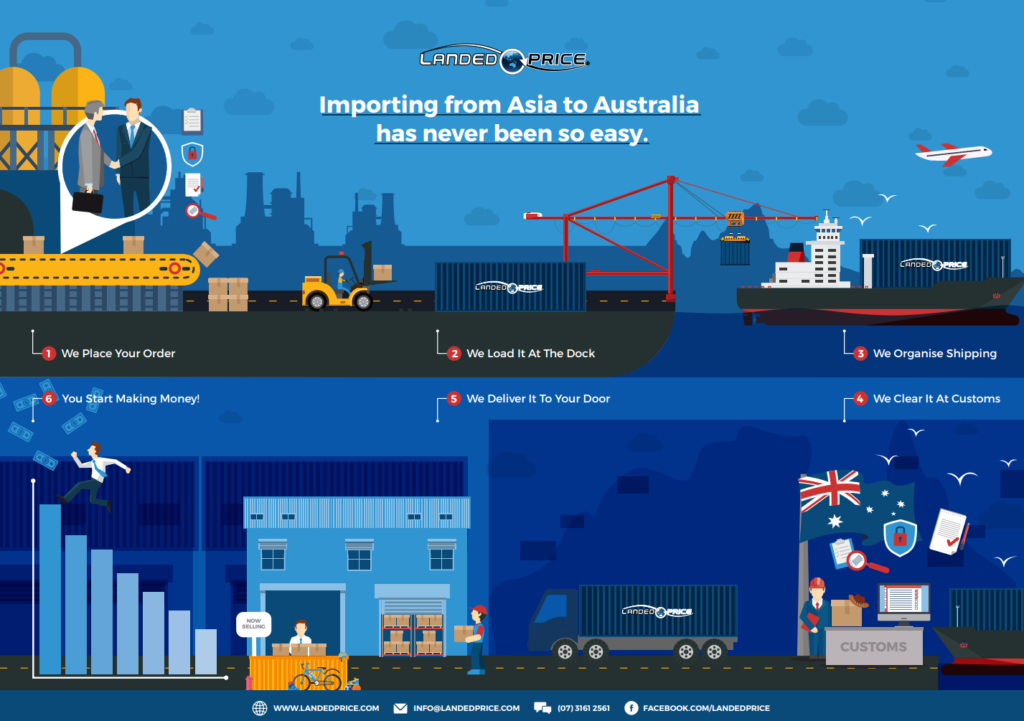Back in 2011 the Australian dollar soared above parity with the US dollar for the first time since 1982. The Australian dollar sat at record high levels up until May 2013, with so many businesses all around Australia benefitting from the decreased cost of imported goods into Australia.
The fall of the value of the Australian dollar in the past 2 years has significantly increased the costs of imported goods all around Australia. The dollar began it’s gradual decline in May 2013 and steadily dropped all the way down to a six year low of $0.69 in September 2015. There are so many external world market factors that influence the rise and fall of the Australia dollar. We won’t go into why the Australian dollar has fallen, but more importantly we will give you an insight on just how the falling Australian dollar affects the cost of imported goods.
As a basic example:
A factory can agree to manufacture goods for $10,000USD Ex factory (not including anything apart from the cost of the goods Ex factory). When the dollar was at parity, the cost of those goods Ex factory – $10,000USD – will cost the same amount in AUD – i.e. $10,000AUD to buy. (This is not taking into account the different currency exchange rates actually secured by different foreign exchange institutions. Most banks will offer a foreign transfer rate at 4-5 cents below the actual trading value.)
Fast forward to late 2015 where the dollar dropped all the way down to $0.70, the cost to purchase exactly the same goods from the same supplier in the same quantity, will significantly increase. At $0.70, that $10,000USD invoice will now actually cost more than $14,280 in Australian dollars! That decrease of 30 cents has actually increased the cost by over 42%. Other associated importing costs also increase, the International shipping lines that transport these shipping containers get paid in USD, so that also increases the logistics costs. When the goods arrive into Australia, the duty and GST amounts payable on imported goods also increases. Based on this example, the landed price of the same goods has increased by more than 40% compared to 2 years ago.

Factories throughout Asia sell their goods to the world in US dollars. They will agree to manufacture or provide their goods at a set USD price. When dealing with these factories, they must be transmitted the exact USD amount – you have to buy that amount of US dollars. When the Australian dollar was at parity $1 USD equalled $1 AUD, so the cost of the exchange was the same.
Infographic
Our below infographic explains how the decrease in the Australian dollar exponentially increases the cost of imported goods, based on $1.00, $0.75, $0.50 and $0.25 respectively:

What does that mean for importers? How does that affect your business? Is that bad for everyone?
While importers enjoyed the record high AUD levels, Australian exporters were feeling the squeeze as the high dollar essentially increased the cost of their products to their International buyers, making them less competitive on the International market. Now that the dollar is back down to $0.70, exporters around Australia are more competitive, but the landed price of imported goods has increased. But it’s not all bad for importers, it just means that the cost of all imported goods into Australia has increased – the key here is ALL IMPORTED GOODS. That means that if the competitors in your market are also importing their goods from overseas, then their landed price has increased by exactly the same amount. Therefore the pricing in the market will increase as businesses maintain their profit margins. If your competitors are selling a product that is actually made here in Australia, then they will gain a slight advantage as their costs have not increased. As most people are aware, in today’s Australian market most of the products we use in our day to day lives are imported from factories overseas.
That means the landed price of all imported goods increases across the board, we are all in the same boat.
AUD / USD – HISTORICAL CHART
GET STARTED HERE





